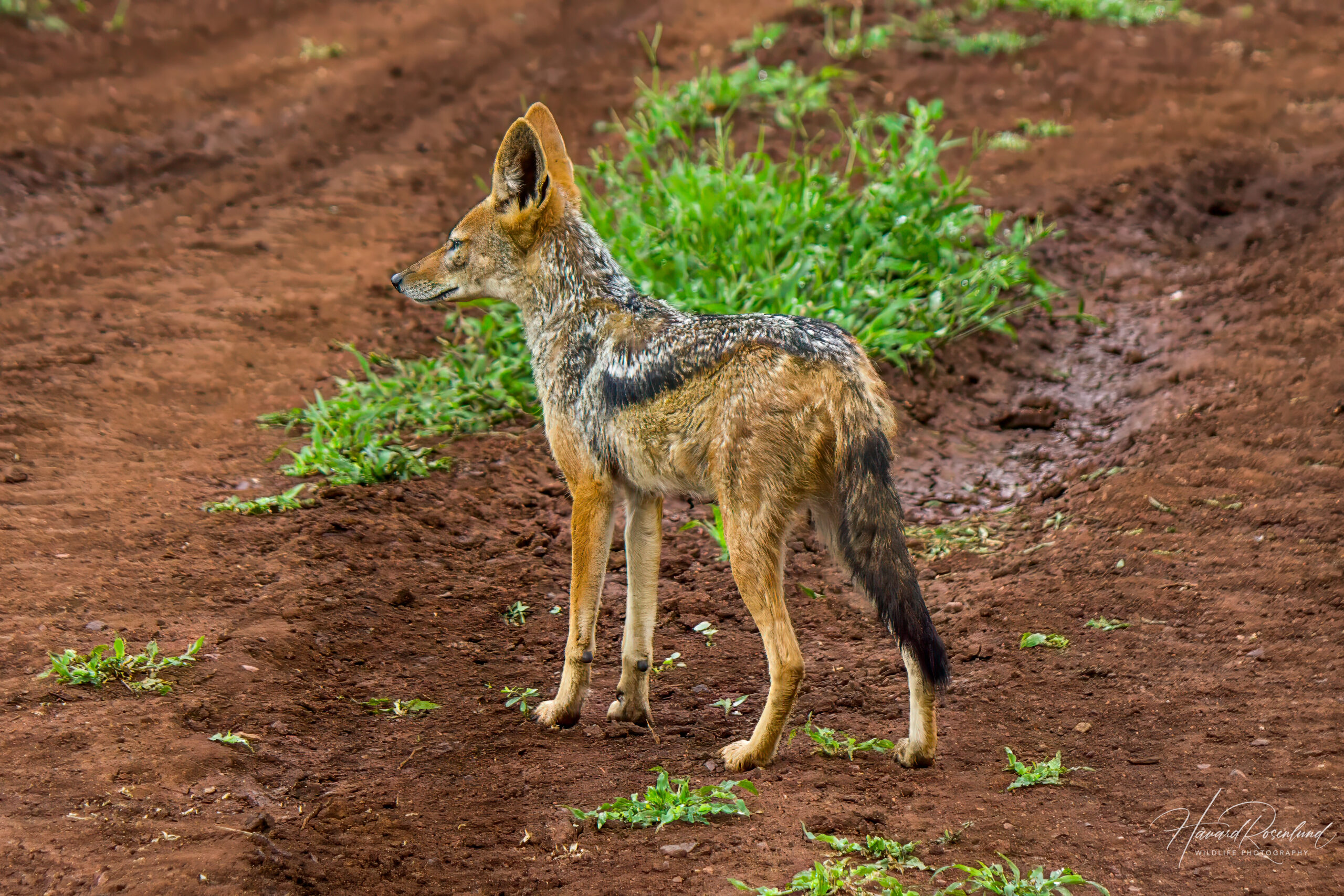Description
The black-backed jackal (Lupulella mesomelas) is the smallest of the two African jackal species and is only found in Africa. It was for a long time believed to belong to the genus Canis, which includes domestic dogs, wolves and coyotes, but it is now believed to be evolutionary older than these species, with fossils dating back a couple of million years. It is now placed in its own genus, alongside the other African jackal, the side-striped jackal (Lupulella adustus).
The black-backed jackal reaches a shoulder height of 30-48 cm (12-19 in) and can weigh up to 13.8 kg (30 lb). Individuals in eastern Africa tend to be larger than southern African specimens. Coloration is reddish-brown to tan. The back is covered in intermixed black and silver hair with a sharp black line separating the back from the redder flanks. The tail has a black tip. It can be confused with the larger side-striped jackal which also has a line down the sides separating its back and flanks. Side-striped jackals are a lot greyer in overall appearance, the stripe on their side is black with a white line above and the tail is black with a white tip. The two species are often found in different habitats, as black-backed jackals prefer open grasslands and savanna whereas side-striped jackals are more shy and prefer woodlands and forests.
Diet & feeding habits
The black-backed jackal is an omnivore and will feed on everything from insects and other arthropods to small mammals and antelopes. They also readily feed on carrion as well as fruits and berries. Black-backed jackals are known to be very aggressive, much more so than their relatives, and will often harass larger animals, especially if they are injured. They are known to attack and kill animals up to the size of adult Thomson’s gazelle, and even adult impala has been recorded as prey. They are quite bold and will often approach kills of larger carnivores, such as lions and hyena, to steal pieces of meat. They are mostly nocturnal, but their opportunistic behavior often have them active throughout the day searching for food except during the hottest hours.
Social behavior & reproduction
Black-backed jackals live in dens which are often dug out by other animals, although they do sometimes dig themselves. They either live alone, in pairs or in small family packs. Black-backed jackals are monogamous and do only mate with one partner. They are territorial and during mating season they frequently chase off same-sex individuals from their territory. Three to six pups are born after a gestation period of 60 days. The pups are born in winter or in summer depending on the prey species they target. In summer they target an increased population of certain rodent species, such as the vlei rat, and in winter they target the antelope calving season. When present, older offspring will help take care of their younger siblings. Pups stay hidden in the den for three weeks with their mother keeping a close guard as the father and older sibling provide food. After six to eight months, they gain independence. Dominant pups reach independence earlier than others.
Status
There are two recognized subspecies of black-backed jackal. The southern African subspecies (L. m. mesomelas) and the larger East African subspecies (L. m. schmidti). The black-backed jackal has been targeted as a pest by farmers ever since colonization of South Africa because they often kill livestock and carry rabies. Attempts were made to eradicate them, but the species is so successful and adaptable that any attempt generally failed. The species is to this day still widespread and fairly common within its range and it is listed as least concern on the IUCN Red List.







